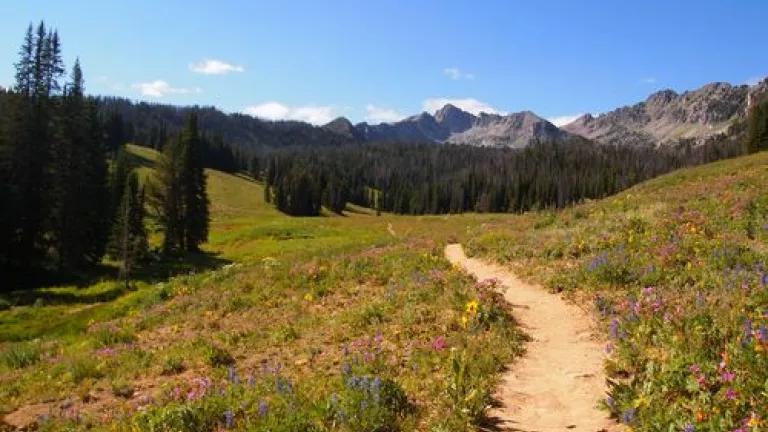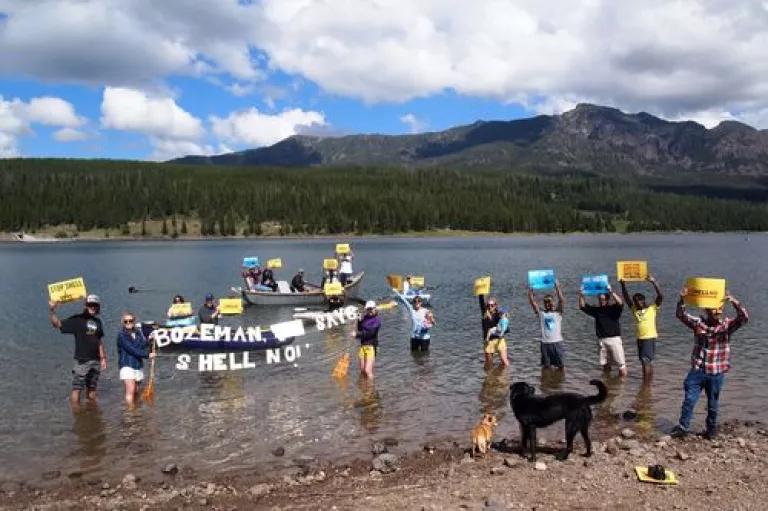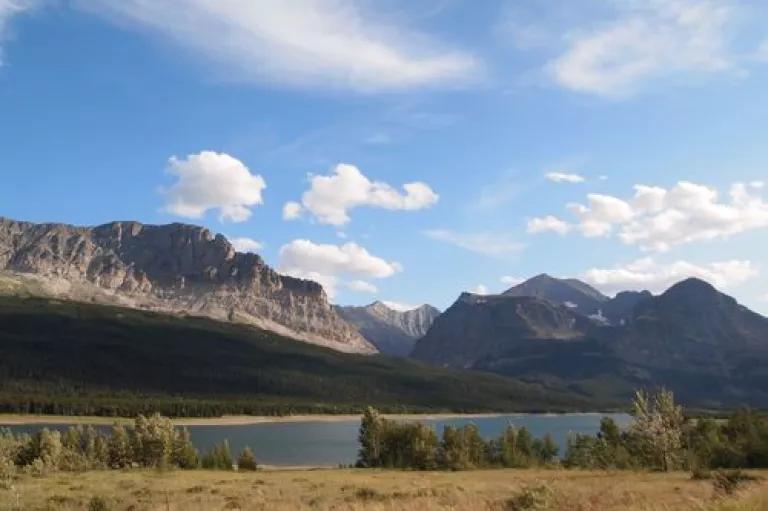
A hunter, a surfer, and a vegan with a bulldog named Beef congregate in an office on Monday morning. Despite the perfect preface for a joke, this is the daily work atmosphere in the NRDC Northern Rockies Office in Bozeman, Montana, where I have spent the past few months interning as the Ann Clark Environmental Fellow. As a recent environmental studies graduate from a small school on the East Coast, Montana was as foreign to me as sage-grouse, bison, gray wolves, and the controversy that surrounds these species. Yet, sometime between the hours of wondering if Bozeman breeds exceptionally tall residents and hearing close-encounter wildlife stories, I explored this lively valley, the surrounding mountains, and the lifestyle of a professional environmentalist.
My primary interest in environmental studies has always been energy - an odd fascination that began with a conversation about geothermal energy during a backpacking trip through Zion National Park in high school. In college, I indulged myself with studies analyzing how decisions regarding different energy sources are made, as well as how those decisions impact humans. When I first saw the posting for a summer internship working on wildlife and energy issues in NRDC's Bozeman office, I leaped at the opportunity to explore a new part of the country as well as a new approach to energy issues.
Under the guidance of one colleague, I spent the first half of my summer creating fact sheets about the impacts of energy development on wildlife - specifically mule deer, elk, pronghorn antelope, and sage-grouse. Writing these reports in Montana - surrounded by the very species NRDC advocates for - made me more aware of the sobering reality of declining sage-grouse populations and made my work more personal. But it wasn't until completing this project that I realized how limited my anthropological perspective had been, as "environmental studies" encompasses much more than nature's relationship to homo sapiens.
This insight was reaffirmed when a second summer assignment required me to research Shell's proposal to drill for oil in the Arctic Ocean. The assignment coincided almost perfectly with the National Arctic Day of Action (July 18), and soon I found myself organizing a "Shell No!" event at the picturesque Hyalite Reservoir south of Bozeman in the Gallatin Mountains. Although some warned me that Bozeman is not the most politically active place, a crowd larger than I expected - approximately 25 protestors - arrived at Hyalite to participate by waving "Shell No!" signs.

Unlike the protests occurring that day in Washington D.C., Boston, or Chicago, we stood knee-deep in a gorgeous reservoir encompassed by wilderness, joined by Montanans who connected to the biodiversity and wildness of the Arctic that is threatened by drilling. This protest was quieter than some demonstrations I participated in during college, but the setting made our actions feel more symbolic and purposeful than marching down a crowded New York City street on account of climate change.
Although this is my last week at NRDC, I am already sentimental, nostalgic, and grateful for this experience, and the incredible opportunity to learn from these professionals. This summer, I felt welcomed into an environment in which my colleagues' excitement for the natural world extended beyond office work. Inquiries about weekend activities garnered responses that contained some variation of hiking, biking, fishing, or running - and topics such as wildfires and food waste inspired thoughtful debates and discussions during office lunches. It was on a hike with a colleague that I learned the difference between Lodgepole Pine and Douglas Fir - two species that dominate the mountainous Big Sky landscape. It became apparent early on that the staff in this office are passionate about their work and are motivated to protect what surrounds them.
This summer also presented me with the less glamorous realities of working for an environmental non-profit, namely the volatile and unpredictable nature of this work. Unlike my fleeting college experience, where sufficient effort into research and writing was often reflected in the final grade, I discovered that there's no set check list to guarantee an environmental victory. At times, over the course of fifteen weeks, I watched brilliant, hard-working advocates for whom I have the utmost respect express frustrations about inaction due to politics or other issues. As I consider my future in the environmental non-profit world, understanding this reality was important for me. Yet, at the same time, I witnessed substantial, tangible progress being made on crucial environmental fronts - both on the ground and in the policy arena - and I saw how impactful and exciting this line of work can be.

Similar to my transition from the East Coast to the West at the beginning of the summer, this internship marked a transition in my life from a passionate college student to a "real-world" environmentalist. Based on my invaluable experiences this summer, Montana was an ideal location to expand my horizons - geographically, academically, and professionally.
Finally, as I think about my road ahead and where it will lead, my closing thought is this: If my summer with NRDC in Bozeman was any indication of what's in store for my future, I can't wait.
Catherine Schmidt graduated in May from Davidson College, where she majored in Environmental Studies and was a four-year member of the women's lacrosse team. She was the Ann Clark Environmental Fellow in NRDC's Northern Rockies Office in Bozeman, Montana, this summer.

